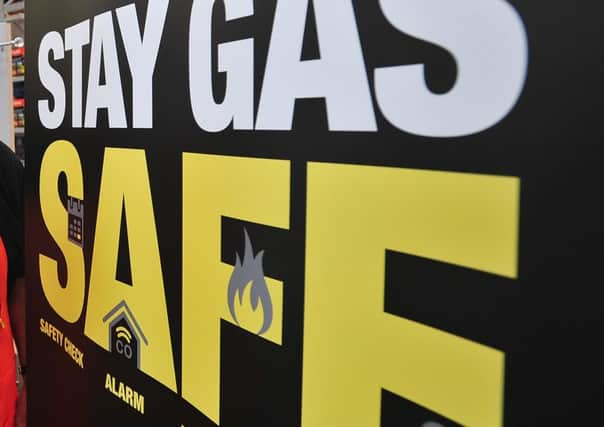Winter warning: Be on your guard for telltale signs of carbon monoxide poisoning


The team at Public Health England says that fossil fuel and wood burning appliances – such as boilers, heaters and cookers – should be checked by an appropriately registered engineer before winter sets in.
Carbon monoxide is a colourless, odourless and tasteless gas which is difficult to detect. At high levels carbon monoxide poisoning can cause sudden collapse, loss of consciousness and death.
Advertisement
Hide AdAdvertisement
Hide AdOther symptoms include headaches, drowsiness, dizziness, chest pains, nausea and vomiting.
There are around 40 accidental deaths a year from carbon monoxide poisoning in England and Wales.
Dr Simon Bouffler of Public Health England’s Centre for Radiation, Chemical and Environmental Hazards (CRCE) said: “Many of these deaths take place between November and February due to faulty fossil fuel and wood burning appliances giving off this lethal gas. These deaths are preventable.
“To lower the risk, people should ensure that their fossil fuel and wood burning appliances are regularly checked by an appropriately registered engineer.
Advertisement
Hide AdAdvertisement
Hide Ad“Public Health England recommends that people have these appliances and their flues checked before the start of winter. Rooms in which appliances are used must also be adequately ventilated.
“PHE also recommends that people should fit an audible CO alarm which meets European Standards EN 50291 in their homes.”
The installation of an alarm, which can be bought from most DIY retailers, should not, however, replace regular servicing of all fossil fuel and wood burning appliances by a registered engineer.
It is estimated that around 4,000 people attend accident and emergency departments in England each year because of carbon monoxide poisoning.
Advertisement
Hide AdAdvertisement
Hide AdAlthough most of the 4,000 people would not be sick enough to be admitted to hospital, it is known that long-term exposure is associated with neurological effects – such as having difficulties in concentrating.
Dr Bouffler said: “Although carbon monoxide is difficult to detect, there are sometimes indicators that may suggest a fault with domestic appliances or flues.
“The signs of trouble are black sooty marks on the radiants – the clay bars above the gas flames – of gas fires, sooty marks on the wall around stoves, boilers or fires, and smoke accumulating in rooms due to faulty flues.
“In addition, yellow instead of blue flames from gas appliances is another sign that there may be a fault with the appliance – although this does not apply to ‘fuel-effect’, ‘living-flame’ or ‘decorative-flame’ gas fires as they are designed to look like flames from solid fuel appliances.
Advertisement
Hide AdAdvertisement
Hide Ad“If you see any of these signs, or suffer from any of the symptoms mentioned, turn off your appliances, open your windows and have an appropriately registered engineer check the appliance as soon as possible.
“You should also see your GP and tell them that you think you might have been exposed to carbon monoxide.”